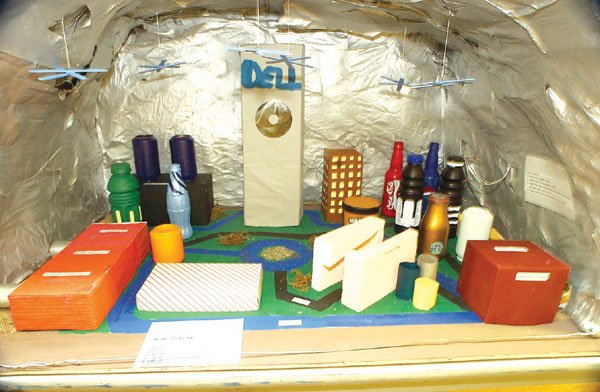GILROY
– For a glimpse into the world of 2150, look no further than
Saint Mary School.
Nine junior high students there competed in the Future City
Competition, with each team of three receiving honors for their
designs.
By Lori Stuenkel
GILROY – For a glimpse into the world of 2150, look no further than Saint Mary School.
Nine junior high students there competed in the Future City Competition, with each team of three receiving honors for their designs.
Quick Silver, a city designed by Nickie Ellis, Rebecca Mantecon and Amanda Nojadera, won “Most Technologically Advanced” in the regional competition held at Santa Clara University last weekend. Spheronia, designed by Annie Crisp, Deanna McGill and Anthony Pichardo, won the “People’s Choice Award.” The City of Witney, designed by Stephanie Castillo, Mary Huggins and Katie Hammon, won fourth place out of the more than 30 that were entered.
Science teacher Georgia Stern became interested in the competition several years ago but didn’t have time to coordinate the students until this year.
“I went around and was a cheerleader, but I give most of the credit to the students. They were really dedicated,” Stern said.
The junior high students gave up their own time to work on their future cities, signing a time commitment contract in October to show their dedication to working evenings, weekends and holidays.
“It was a lot of hours in a very small amount of time,” Stern said.
To participate in the competition, sponsored by National Engineers Week, students were required to design virtual cities using computer software, write an essay and construct a three-dimensional replica of a portion of the virtual city.
SimCity 3000 allows the user to design and develop a virtual, living city. To qualify, the students’ virtual cities had to be 150 years old, operating free of debt and be populated by at least 50,000 people, Stern said. The essays described each city’s features and discussed how plastics can be used to help senior citizens in the future. The physical models were built to scale using recycled materials.
The students approached the challenge creatively, Stern said.
One of the teams built their virtual city in an underwater dome and used their essay to perfect the physical model.
“They had to, in their (essay), bridge the gap between the model that they built on the computer and the actual project model,” Stern said.
As part of their city-building research, the students got to pick the brains of City Planning Division Manager Bill Faus, City Treasurer Mike Dorn and orthotics specialist Mike Dodd.
Each team worked under the guidance of an engineer mentor. Parents Dave Ellis of Lockheed Martin Space Systems, Patrick Crisp of Cisco Systems and Lynn Hammon of IBM volunteered.
Stern said she would like to help students enter the competition again next year, especially since their sights are set on making it to the competition finals in Washington, D.C. Only the first place regional winners go on to compete in the finals.
“The seventh-graders have already been talking about the changes they want to make,” Stern said. “They want to win.”












